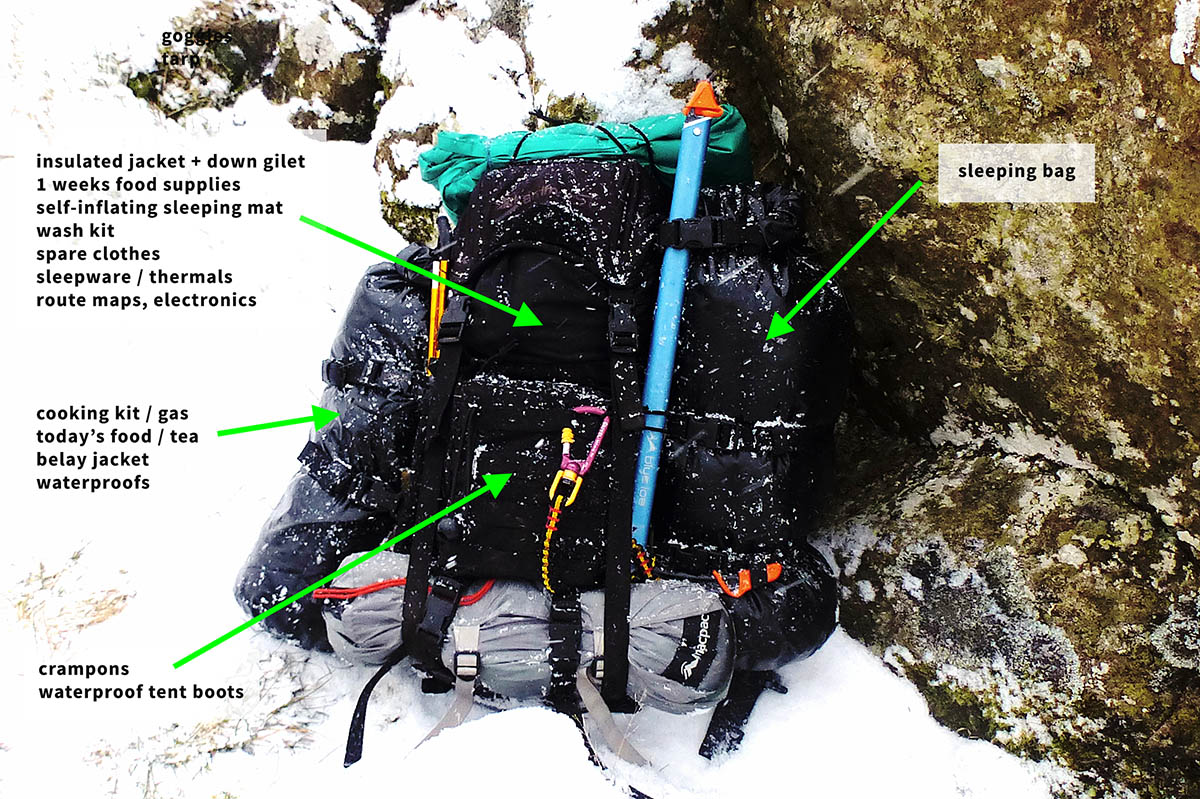From "Extending Pack Capacity (On The Side): Part 1: The Problem"
Section: The stuff we need on the way
When you're trekking for weeks or months at a time, you'll likely notice there's a whole load of kit you don't touch between packing up your tent in the morning and setting it up at night: tent, sleeping bag, sleeping mat, wash-kit, sleepwear, spare clothes, maps not yet required, and of course food rations. In our view, this is what the body of a pack is designed to carry.
At Scramble we like small (30 to 40L) climbing packs. Even though the Predator 30, our favoured trekking pack, is a military "patrol" pack, it's really a climbing pack decorated with MOLLE. It's a stripped down, narrow bodied, single cavity pack with a minimal hip belt. It sits high on the back, has a high centre of gravity and leaves sufficient space for a harness or a large padded belt. Our favourite pack for mountain trekkers that morph into mountaineers when necessary (especially in the winter) is the Blue Ice Warthog 40 (review coming). It looks very different, but in use feels very similar. Both of these packs are very comfortable and well balanced and are tough and durable enough to handle additional loads. As we pointed out in our Predator 30 review, once food supplies dwindle, excess loads can be decantered back into the pack's main body, so the pack integrity and centre of gravity remains relatively constant across the duration of the trek and/or climb.
This post is largely about extending pack capacity, but more than that, it's about access ... or more accurately ease of access to all the stuff you may need between setting off at dawn and setting up at dusk.

